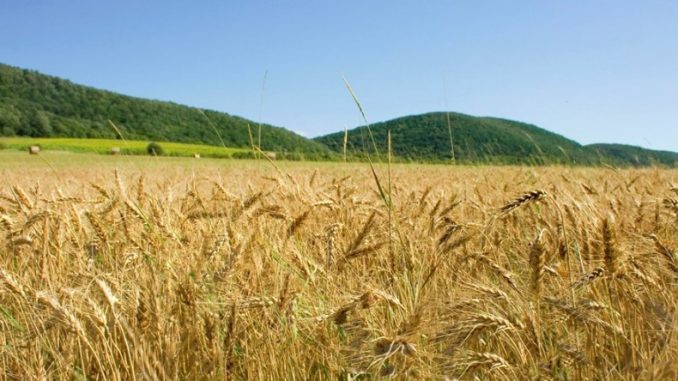
Indian state government of West Bengal has banned cultivation of wheat within five kilometres of the Bangladesh border to prevent the spread of deadly wheat blast disease, several Indian media report.
The move was made after Indian central government advised the state to take such action in order to check the disease, which since earlier this year started spreading in some of the bordering villages, and posed the threat of spreading to other parts of the country.
In an interview, West Bengal agriculture minister, Purnendu Bose told Hindustan Times: “We are in constant talks with agriculture scientists for this purpose. But unless a lasting solution is available, banning wheat cultivation is the only option.” The minister said that about 800 hectares of land in Murshidabad and Nadia districts will come under the ban.
“The crop on this land in the two districts had to be burnt to control the spread of the disease. The state government also paid compensation to the wheat farmers following the loss,” he said.
According to Indian Express, the central government is trying to develop blast-resistant strains. “Farmers should not panic. It is yet to be confirmed,” Director of the Indian Institute of Wheat and Barley Research, Gyanendra P Singh told Indian Express.
“We are in the process of getting blast-resistant strains tested in Bangladesh, Bolivia and the US. We have four strains, which will undergo confirmatory tests in high-disease areas such as Bangladesh,” Singh said.
Wheat blast which is caused by a fungus causes ripe wheat to turn whitish and dry up. The disease has severe effects and can leave a land barren for two years or more. In a very short time, this can infect a very large tract of land and once it strikes, the entire field has to be burnt and the ash disposed to prevent a return the next season.
The blast notoriously devastated wheat production in Brazil during its first outbreak in 1985. In February 2016, the fungal disease was spotted in wheat fields across eight districts in Bangladesh. The epidemic spread to an estimated 15,000 hectares, about 16 % of the cultivated wheat area, with yield losses reaching up to 100 %.
In India, the disease caused by Magnaporthe oryzae, appeared in border districts of Murshidabad and Nadia, which some experts believe was carried by smuggled wheat seed from Bangladesh.
Controversy sparks in 2015 when several media reports about import of 2 lakh tonnes of substandard wheat from Brazil. Food Minister Qamrul Islam and then director general of the Directorate General of Food denied the accusation but the food science and technology institute found the wheat was low in quality by a test run.
The decision to ban cultivation was reached at a meeting between the officials of the Indian central government’s Agriculture Ministry and West Bengal Agriculture Department in New Delhi on June 27, following which the state government issued the order on July 15.
Source: UkrAgroConsult

Leave a Reply